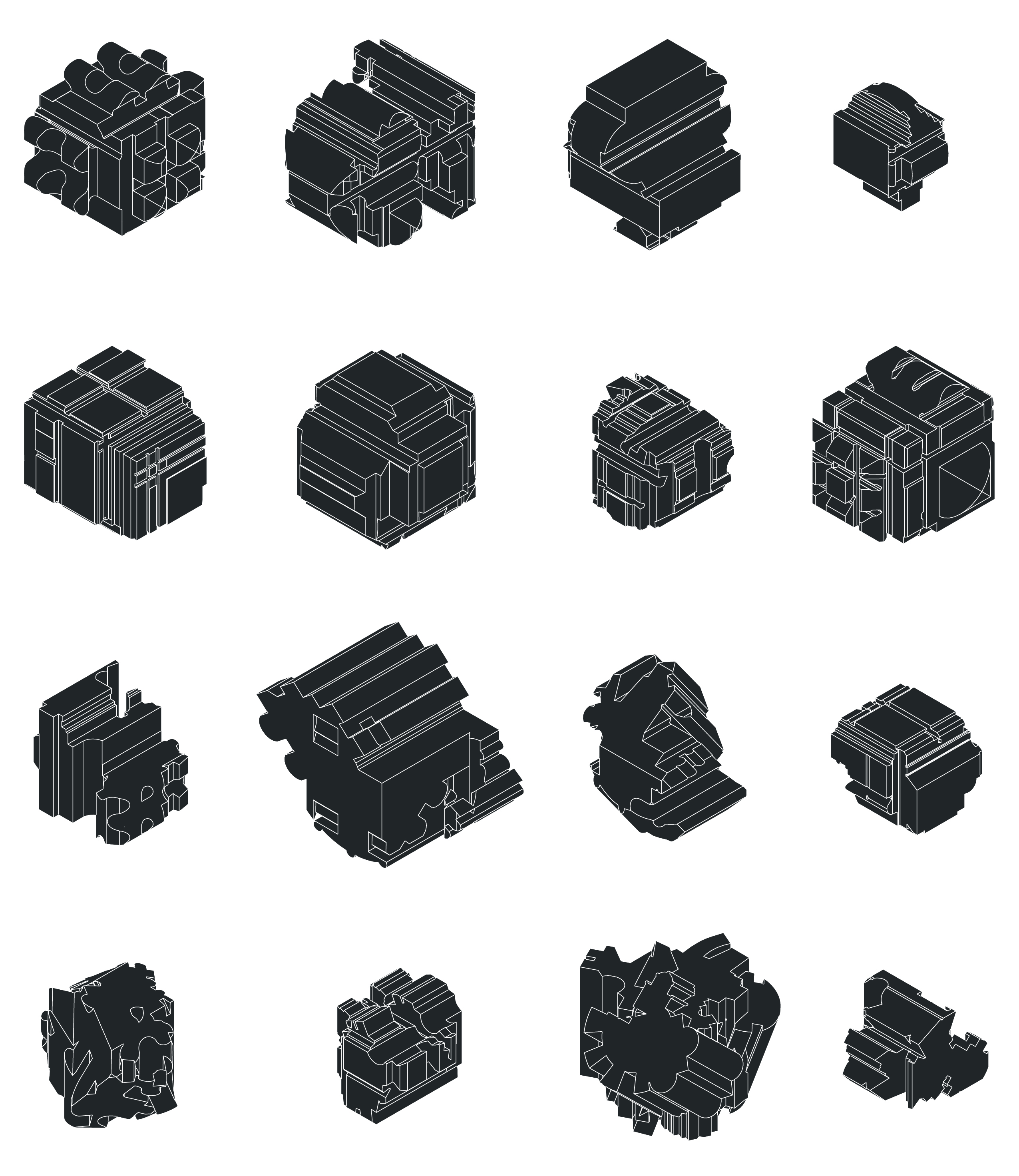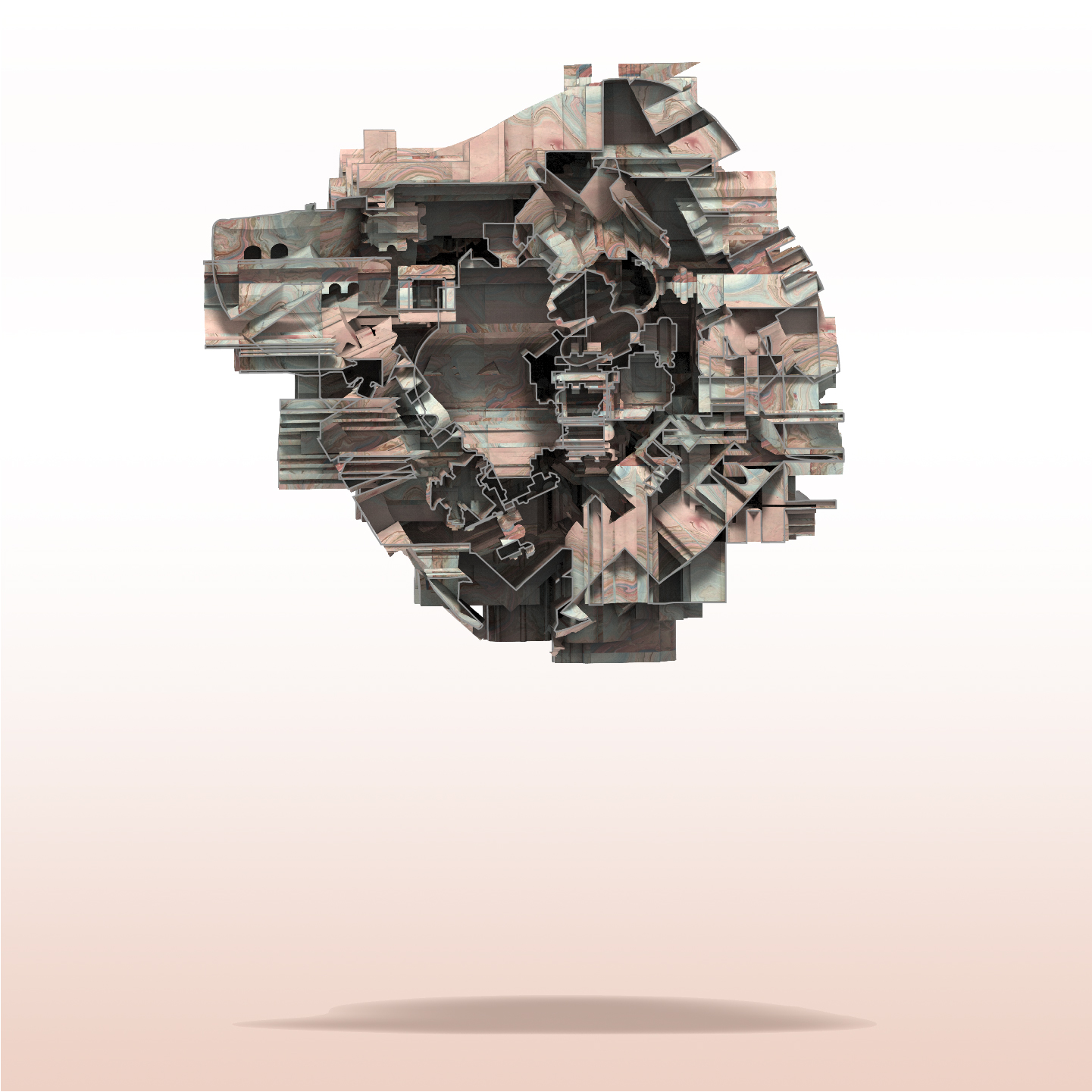
piranesian object
2016
In collaboration with Sophia Kountakis, Reuben Posada, Matt West, & Brooks Van Essen
Critic: Gabriel Esquivel, Texas A&M University
The piranseian object project began with an interest in Mannerist ideas of insertion, intersection, and interaction of spaces in plan. The project investigates plan elements from historic baroque cathedrals, such as Il Redentore, Santa Maria in Campitelli, and San Giorgio Maggiore, and dismantles and compiles them into a reconstruction of a new plan-object that blurs the lines between figure and ground.
The project studies the notion of the Stamp, using Boolean operations of varying severity to generate strange intersections that carry a resemblance to their original part, yet lose their legibilty at the moment of intersection. The process of stamping the plan object allows the formation of a complex, labyrinthine interior. The concept behind the Labyrinthine Object is that spaces are created by the Stamp that cannot immediately be identified, and there is no real way to perceive the object’s interior and its progression.
Yve-Alain Bois writes that “The elevation cannot provide the plan [and vice versa], for as one walks around it, one finds no element that has maintained a relation of identity with the others.” Like the Carceri engravings, the object is composed of recognizable canonical architectural elements, yet the composition itself is strange in terms of its mereology and organization.
The piranesian object is totally removed from its source data, yet has a similar nature; a series of objects overlapped to create a new space. Operations of the Stamp act upon surfaces to create new conditions on the surface and beneath it, resulting in a space that is thoroughly labyrinthine - a strange extension of the disjunction of the source objects, where only a viewer of each plan and section could even hope to grasp its whole complexity. This isolation of the object affirms its Architecture and its Autonomy while denying the metaphysics of presence.





